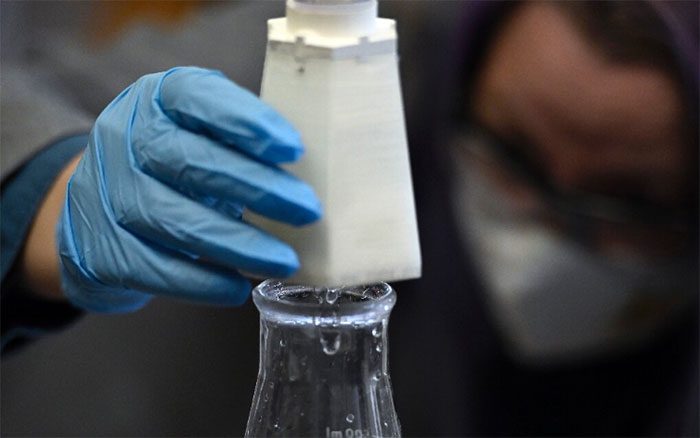Tasked by their teacher to research a low-cost water filter, high school students have surprised everyone by creating a device capable of removing lead from water for just 23,000 VND (approximately $1).
This new “invention” is hoped to improve water sources for many households in the future.
According to the scientific news site Phys.org, up to 10 million households in the United States are still using lead-contaminated water, putting the health of many individuals at risk.

Model of a Lead Removal Machine Priced at $1 – (Photo: Phys.org)
Understanding this issue, Rebecca Bushway, a science teacher at Barrie High School in Maryland, USA, assigned her students an interesting task: to invent a filter capable of removing lead from water at a low cost.
This topic is both intriguing and challenging, as the cost of installing a water filtration system for a household can range from $600 to $14,000, making it difficult for many Americans to access clean water.
Surprisingly, Bushway’s students excelled in their assignment, using 3D printing technology to create a model that stands 7.5 cm tall and is made from biodegradable plastic, costing just $1 per product (approximately 23,000 VND).
Bushway explained that this model operates based on a chemical precipitation method to remove metals from water.
The model consists of calcium phosphate (Ca3(PO4)2), which interacts with metals and causes precipitation, a process known for forming solid substances after a chemical reaction.
Due to this property, lead (Pb) will precipitate (turn into a solid) and be retained in the model. As the precipitate forms, it becomes larger than the drainage holes, causing it to get stuck inside the model while the cleaned water flows out.
Additionally, this model can signal to users when it’s time to replace the filter: the group of students placed another chemical called potassium iodide beneath the calcium phosphate. When the calcium phosphate is exhausted in the filter, the potassium iodide layer will appear and react with lead, turning the water yellow – an indication that it’s time to replace the filter.
Bushway has presented the device model at four different workshops, including the prestigious spring conference of the American Chemical Society, and plans to write a publication for experts to evaluate.
Paul Frail, a chemical engineer, stated that the model deserves recognition. However, the students’ product requires further testing for safety and market demand if it were to be produced.
Nonetheless, this students’ solution is highly promising. The detrimental effects of lead poisoning in the U.S. have persisted for decades without a comprehensive solution, although currently, President Joe Biden has committed to investing billions of dollars to address this issue, according to Phys.org.



















































